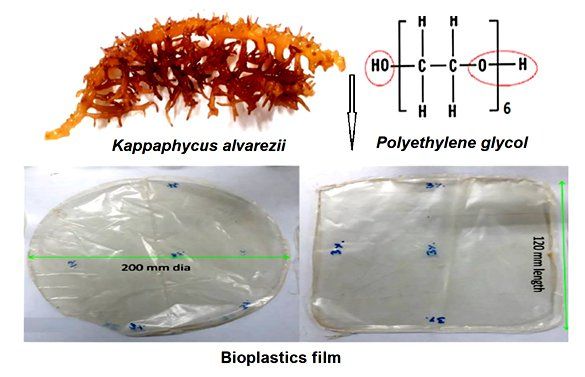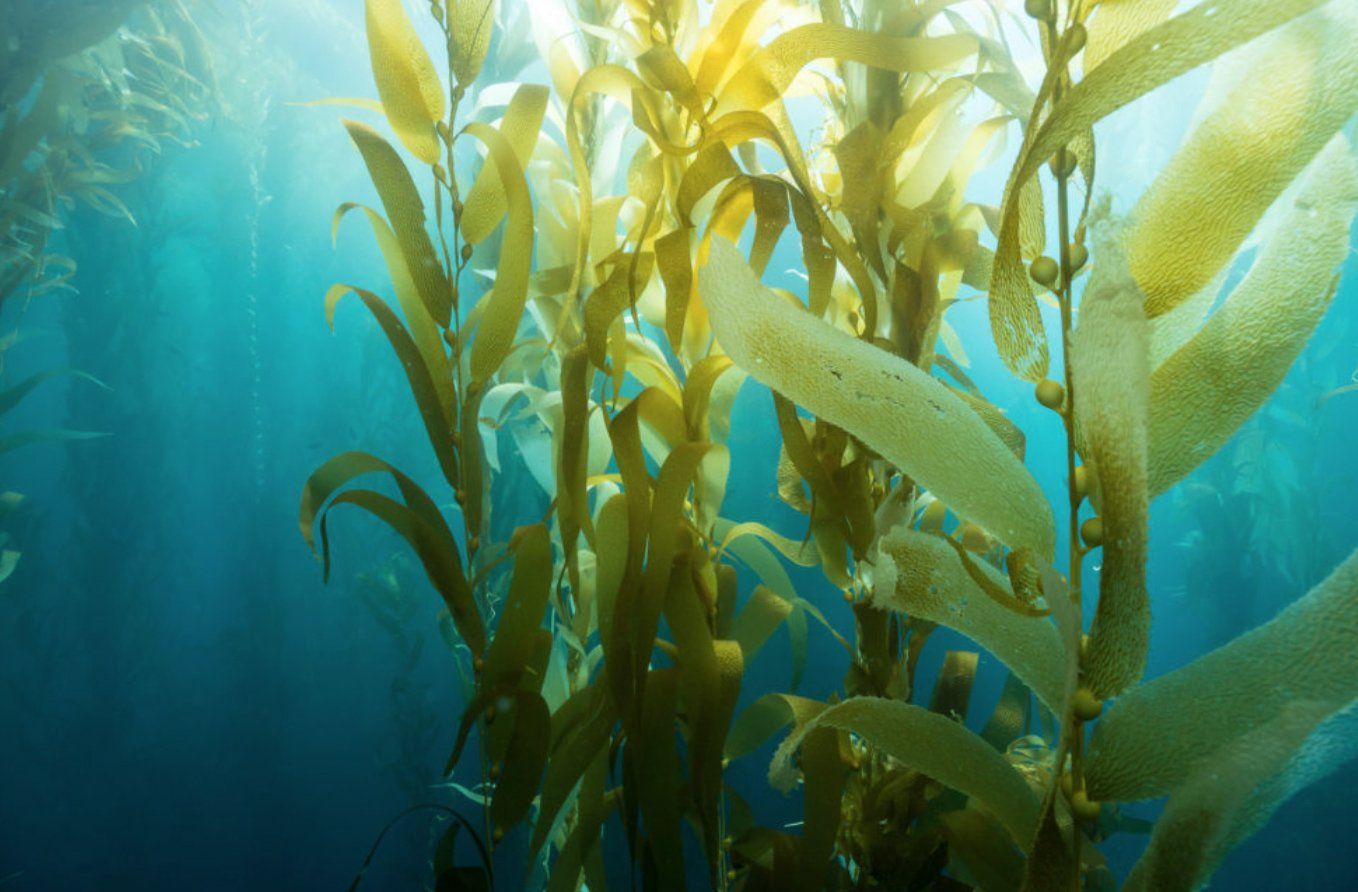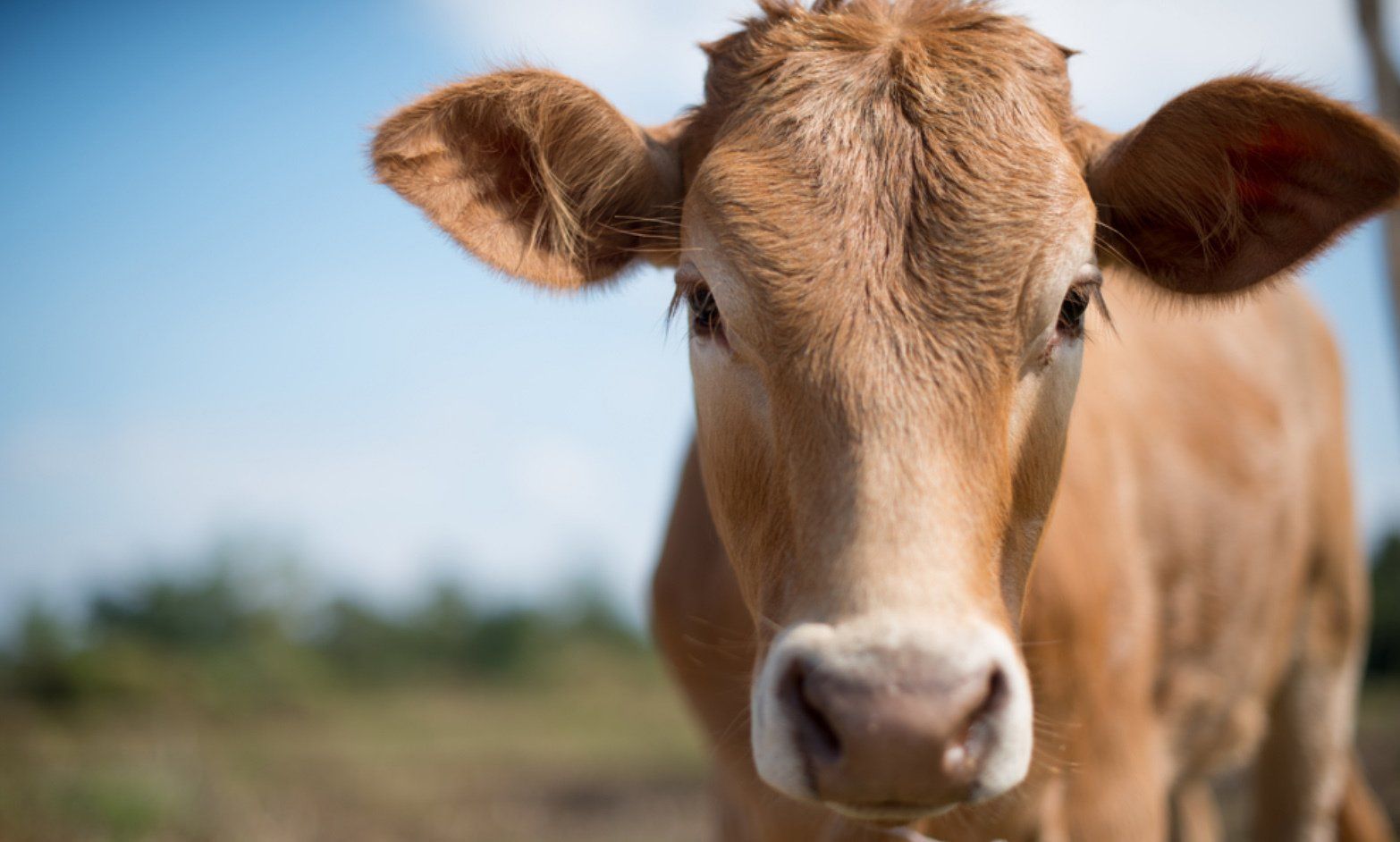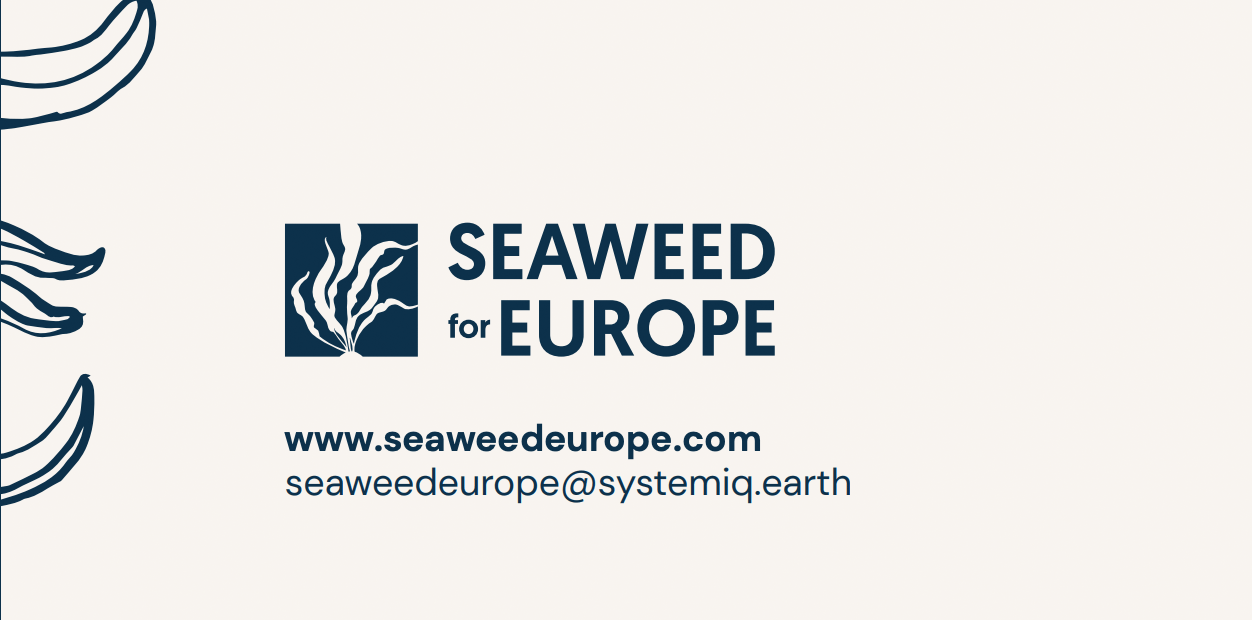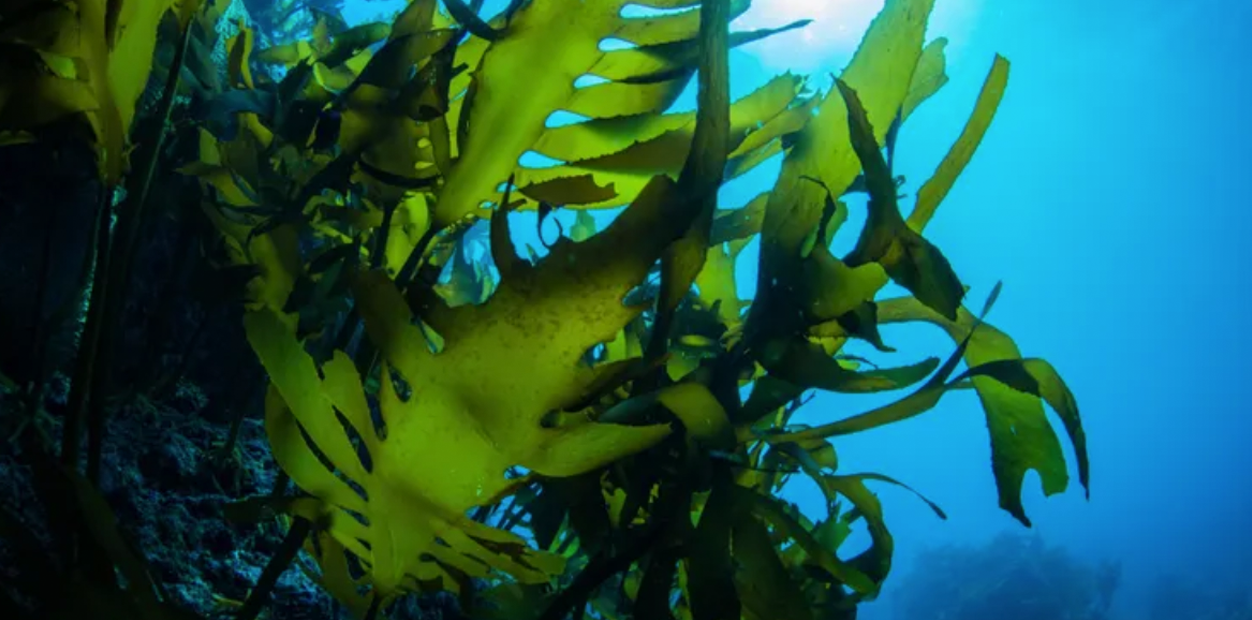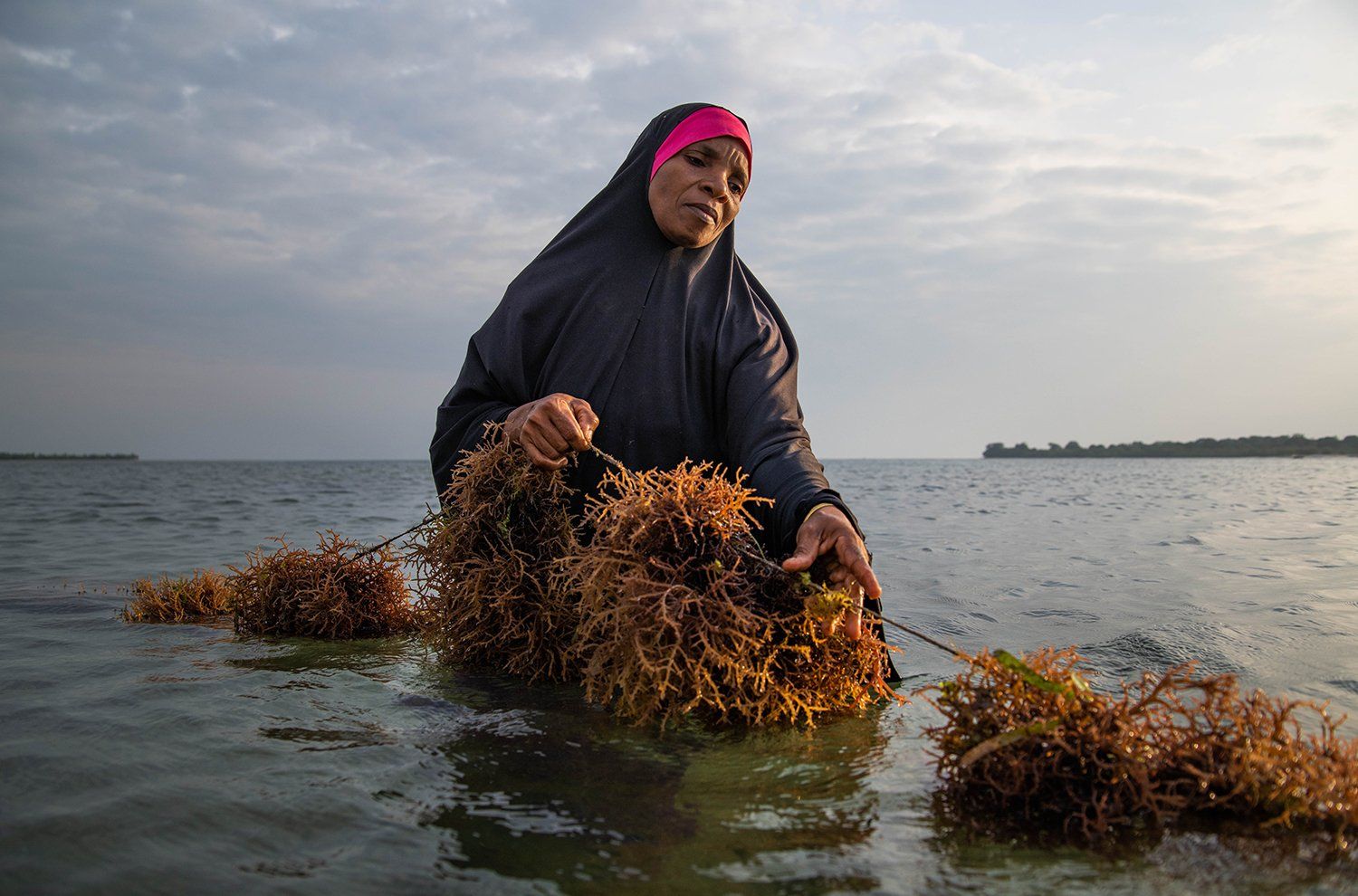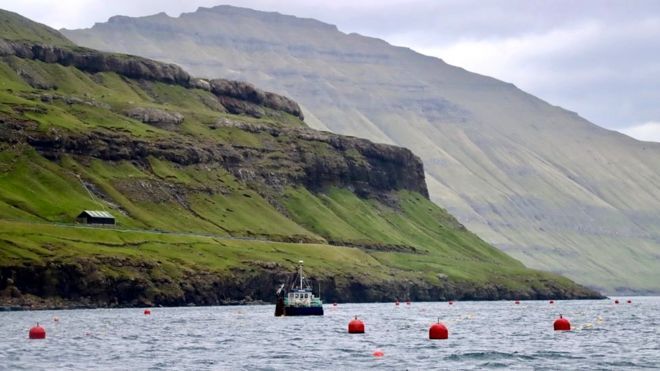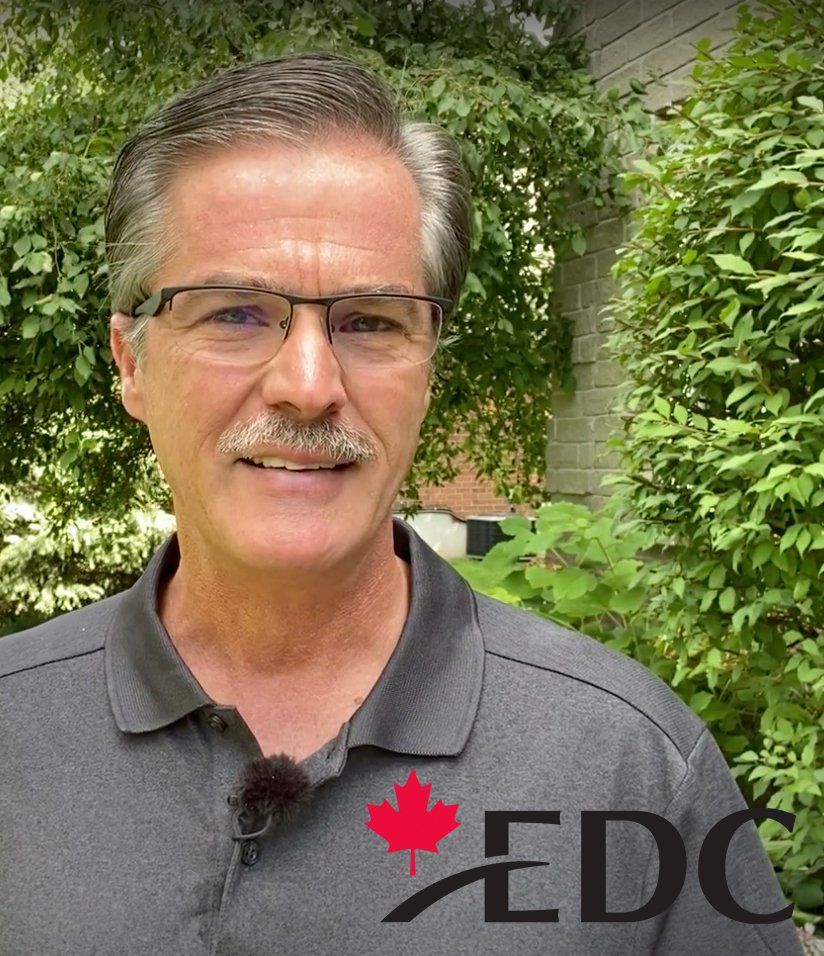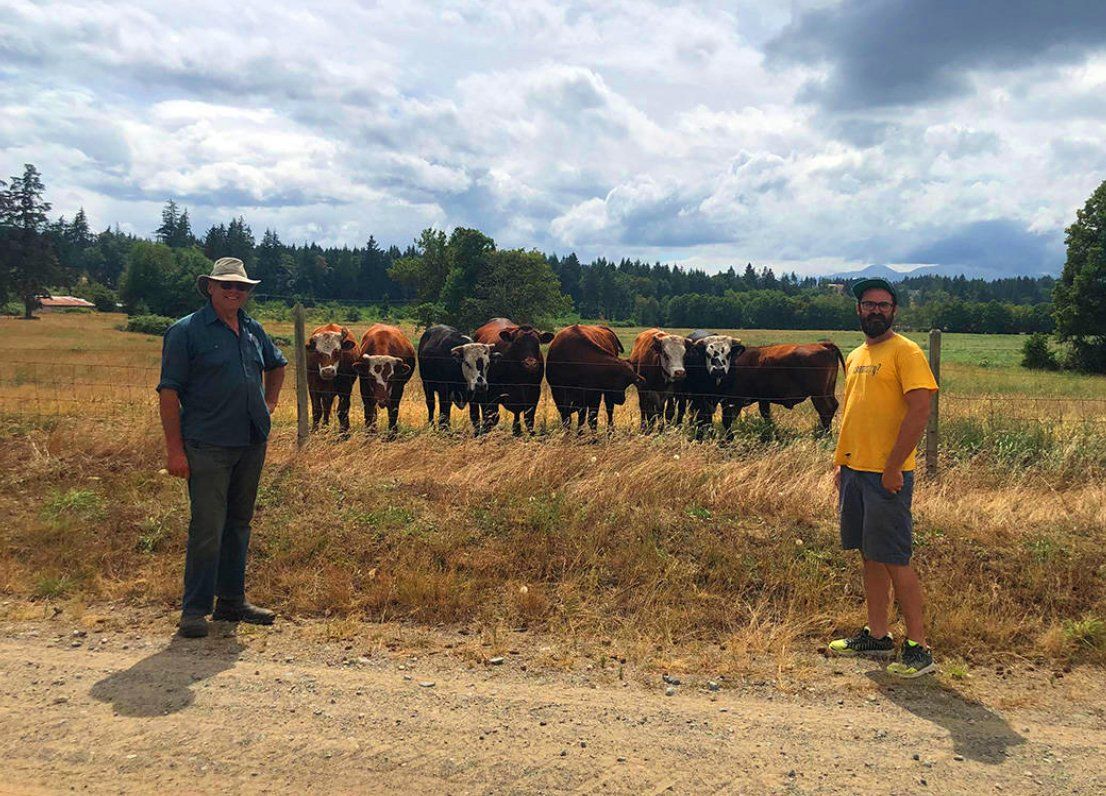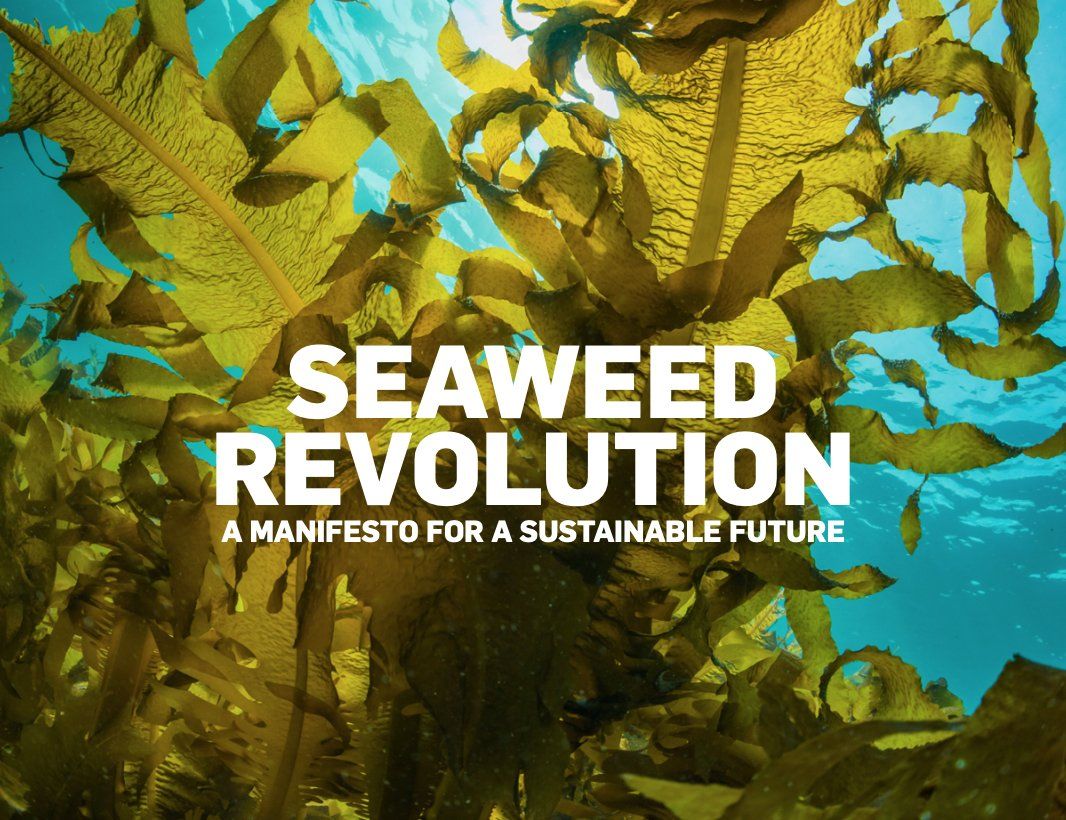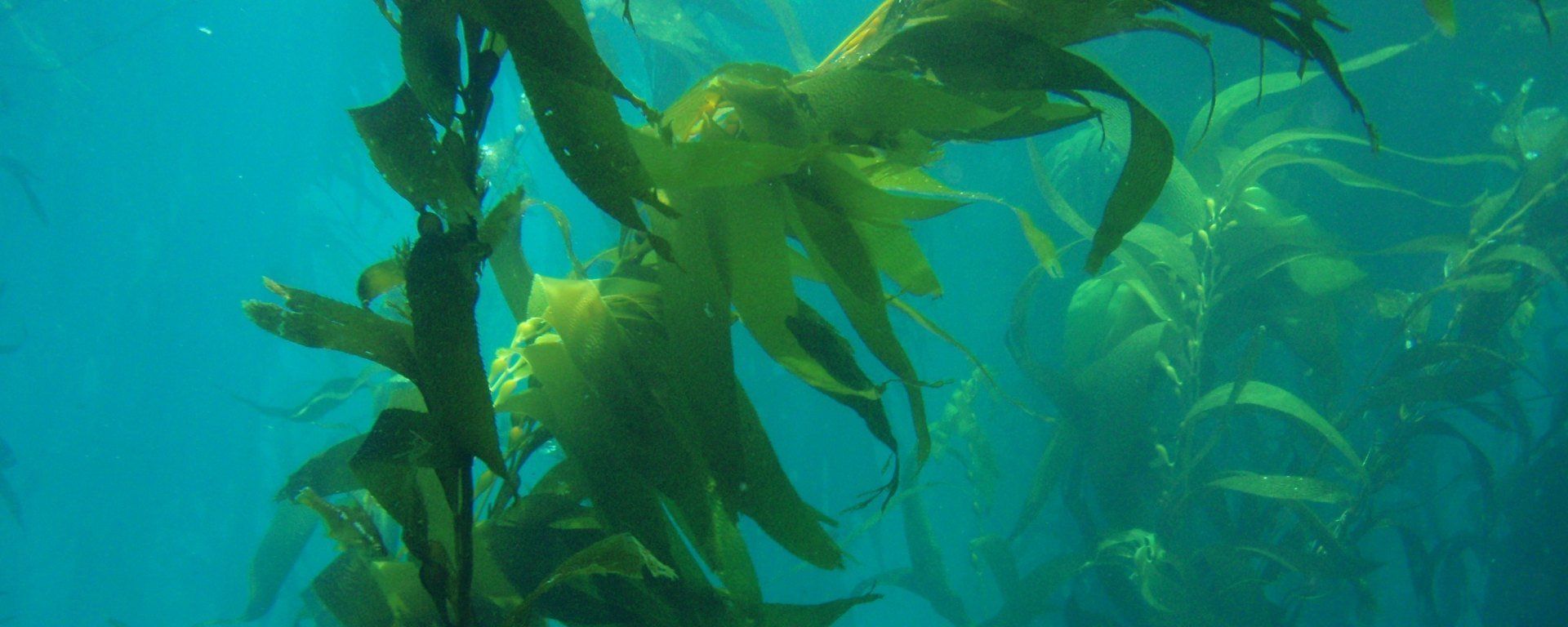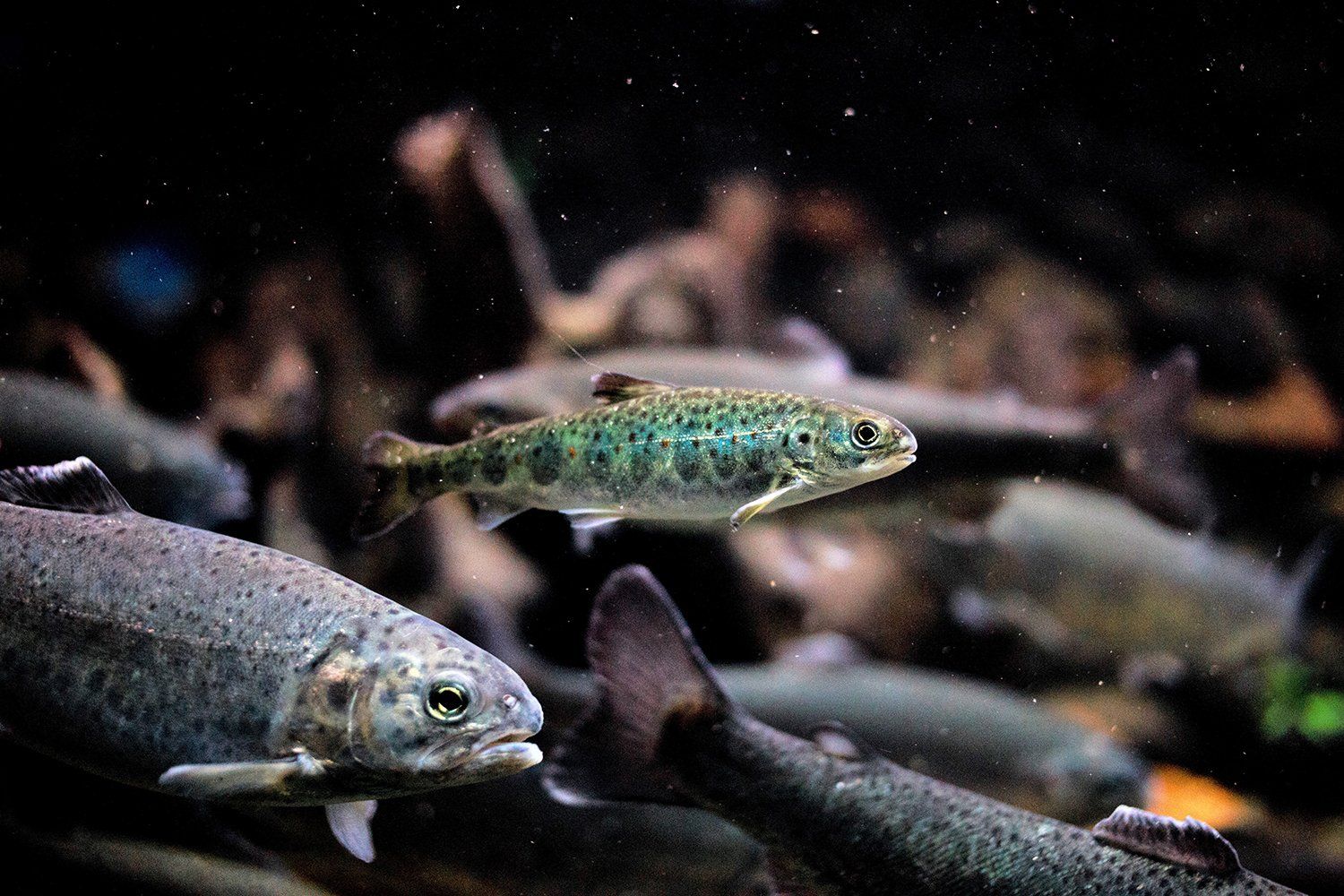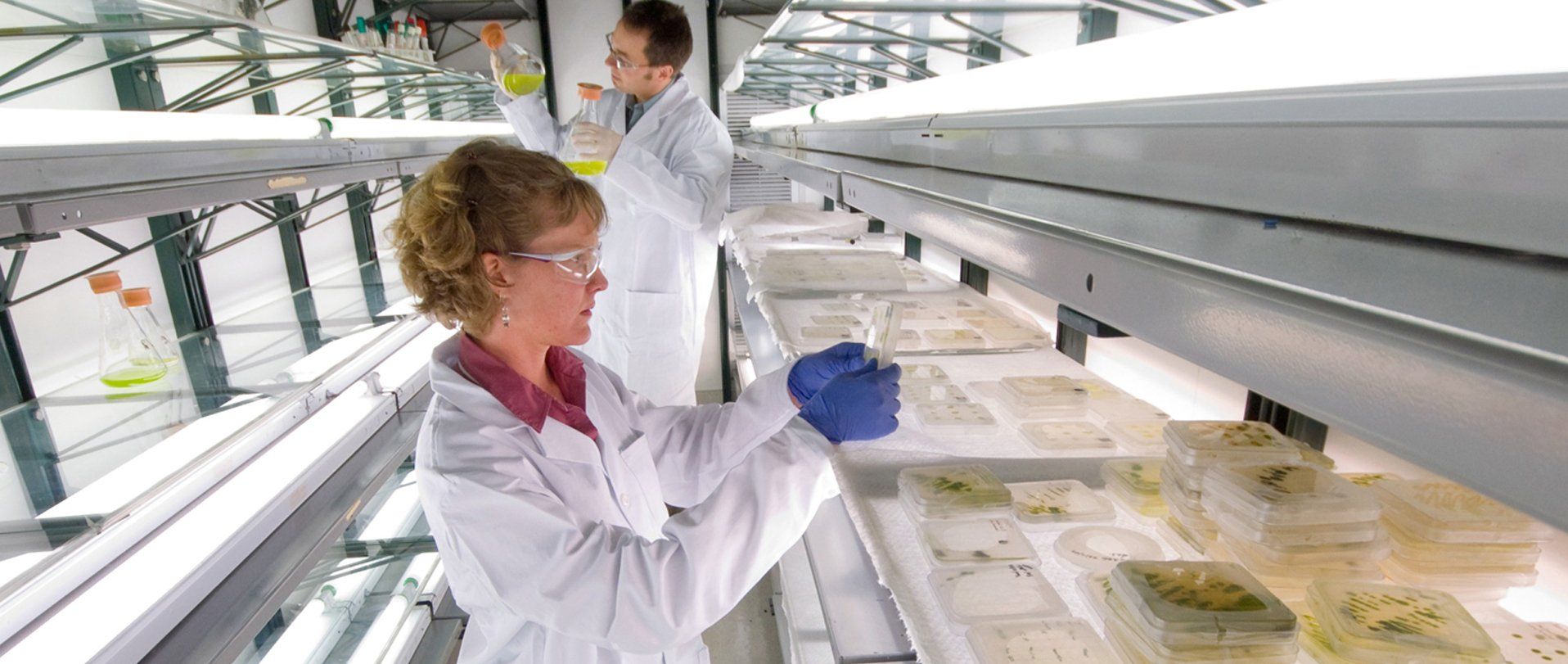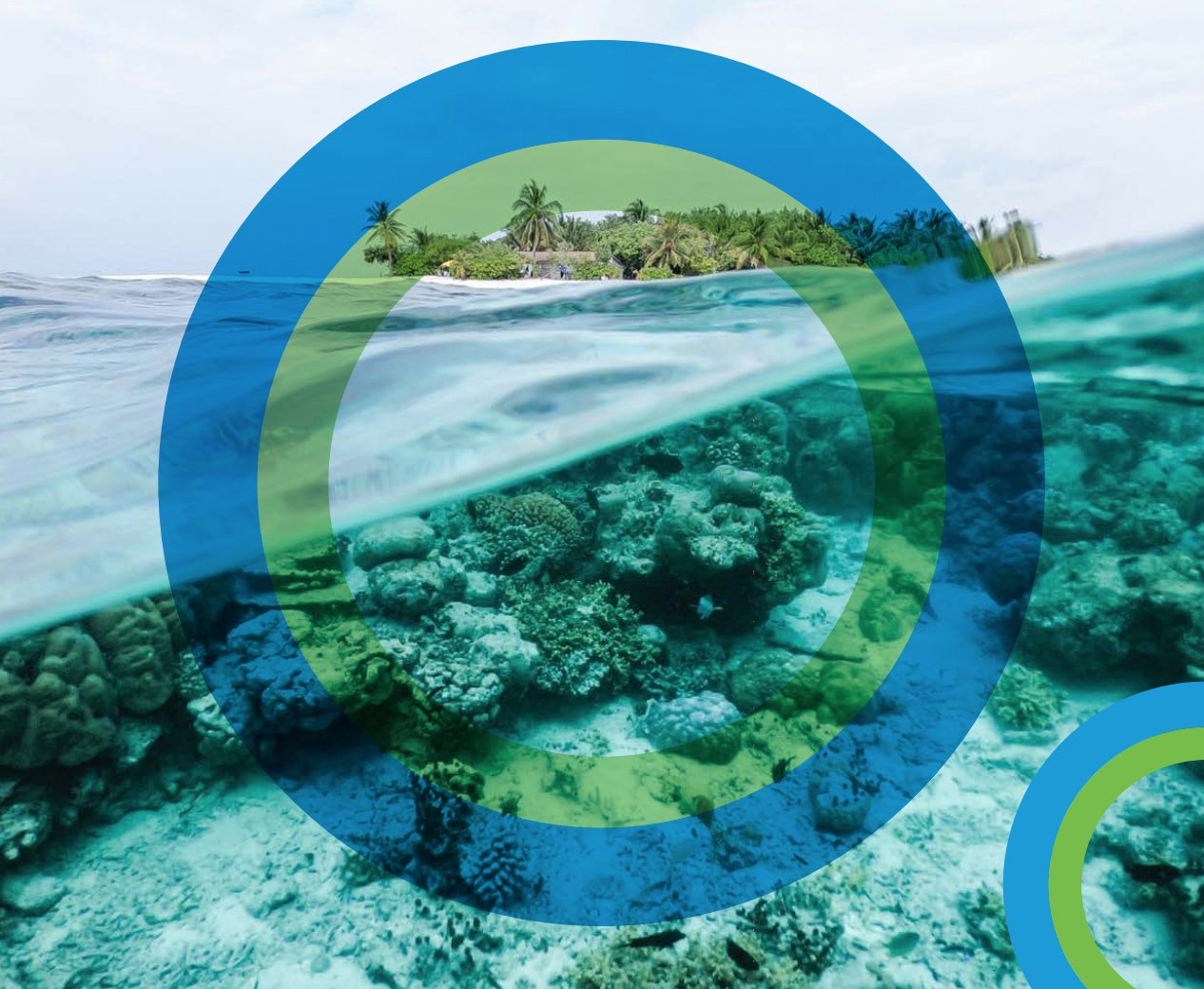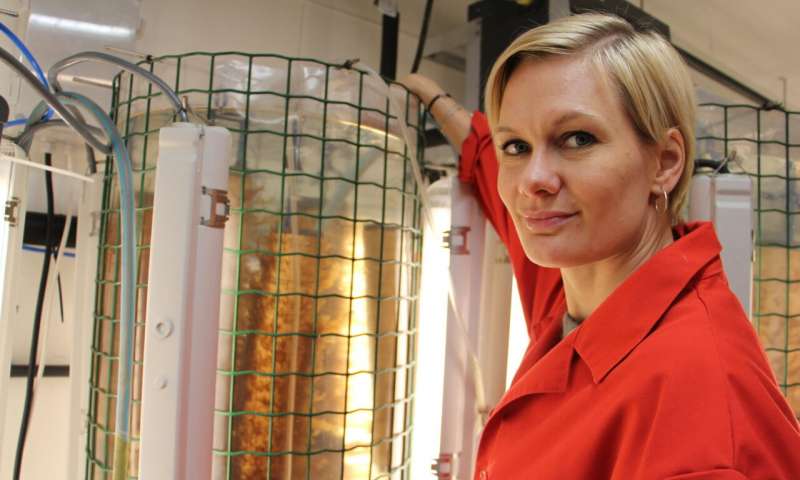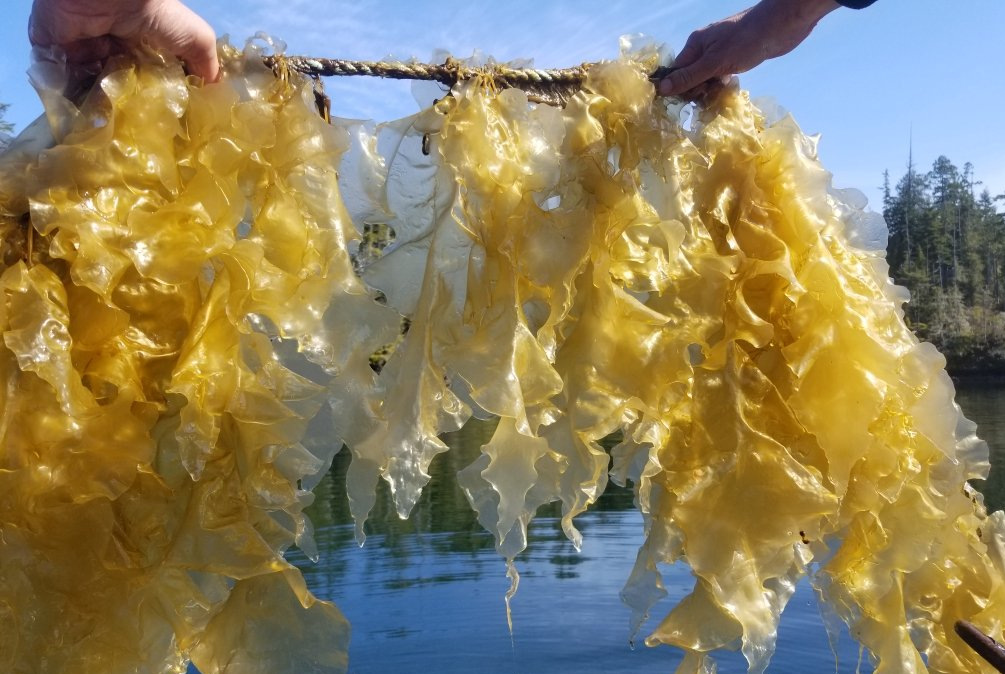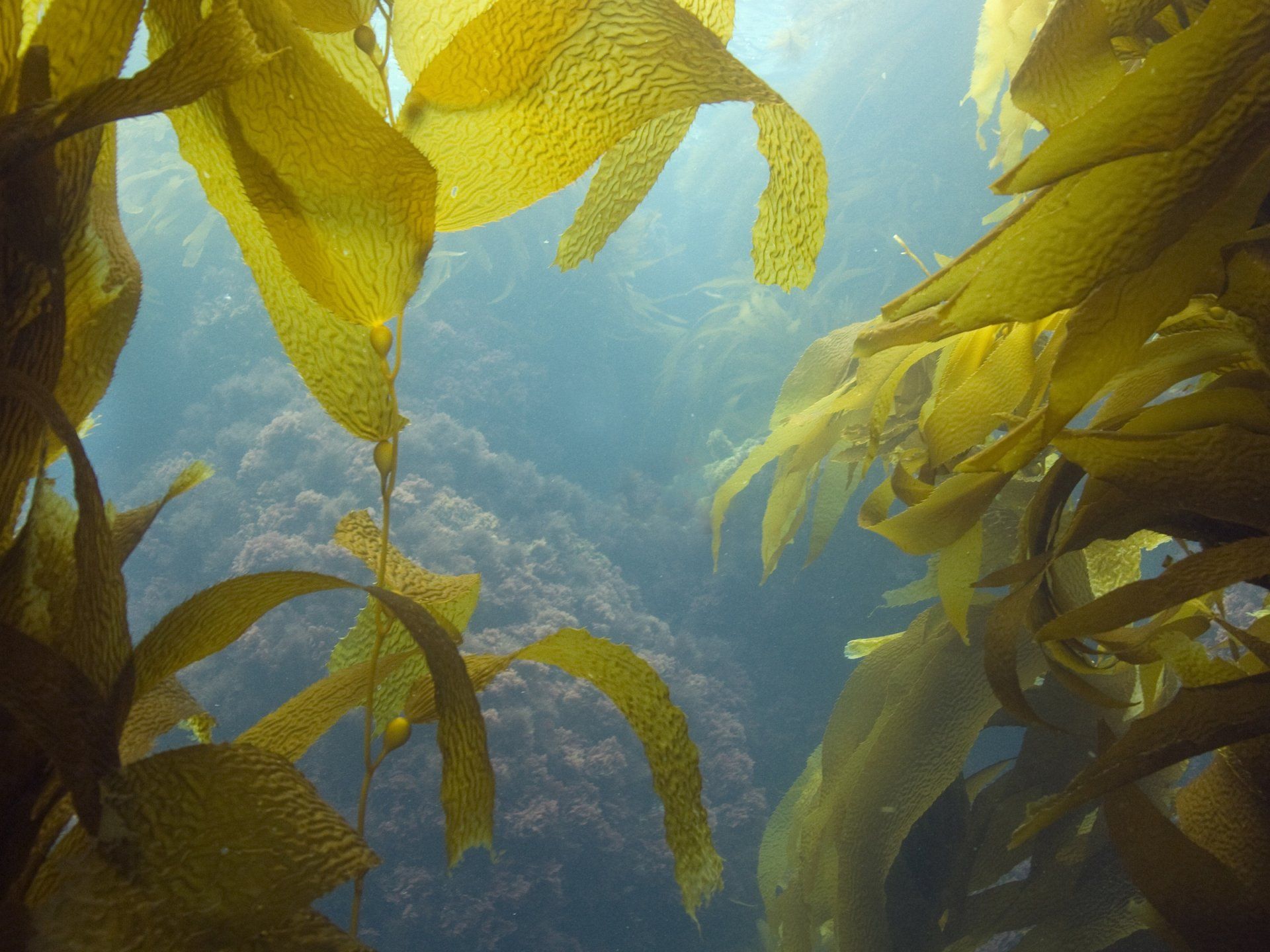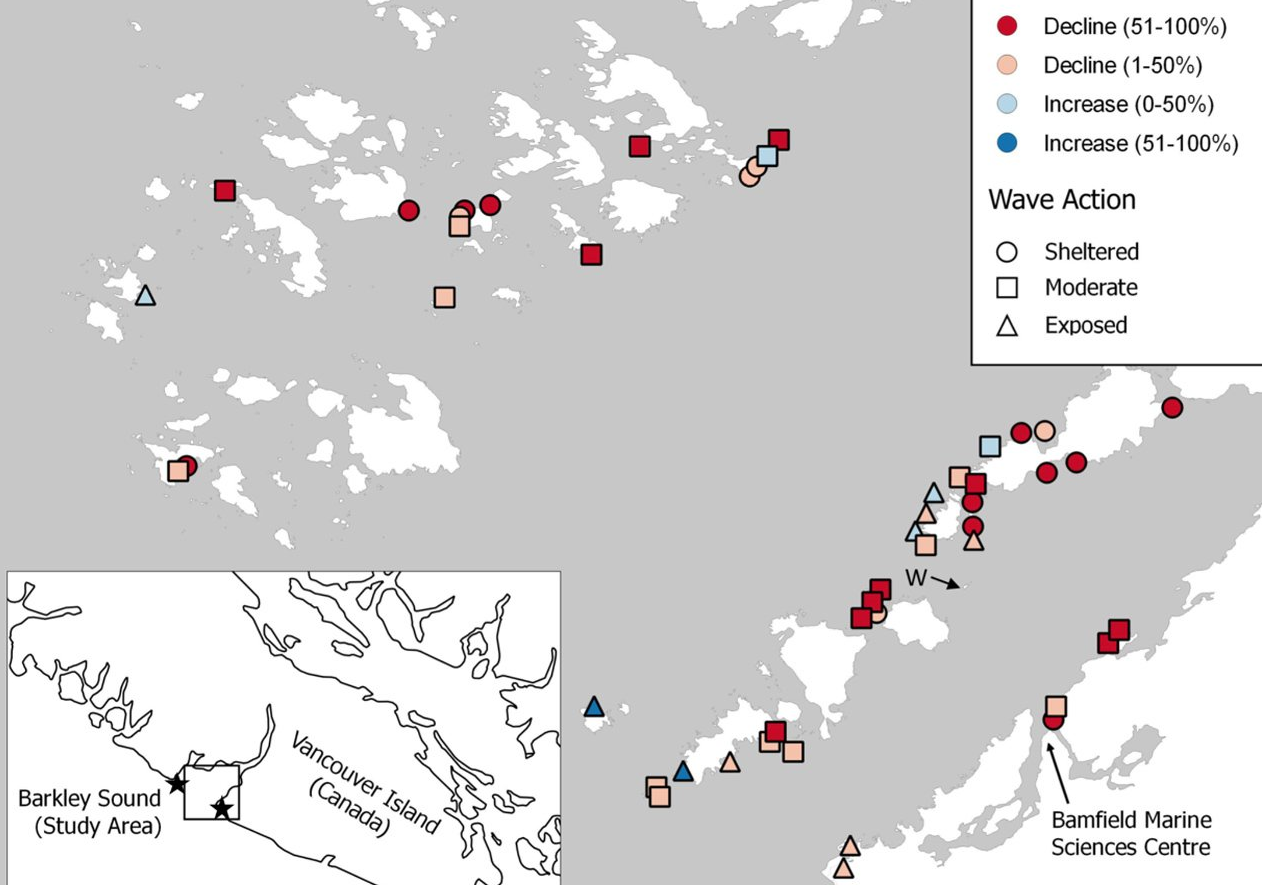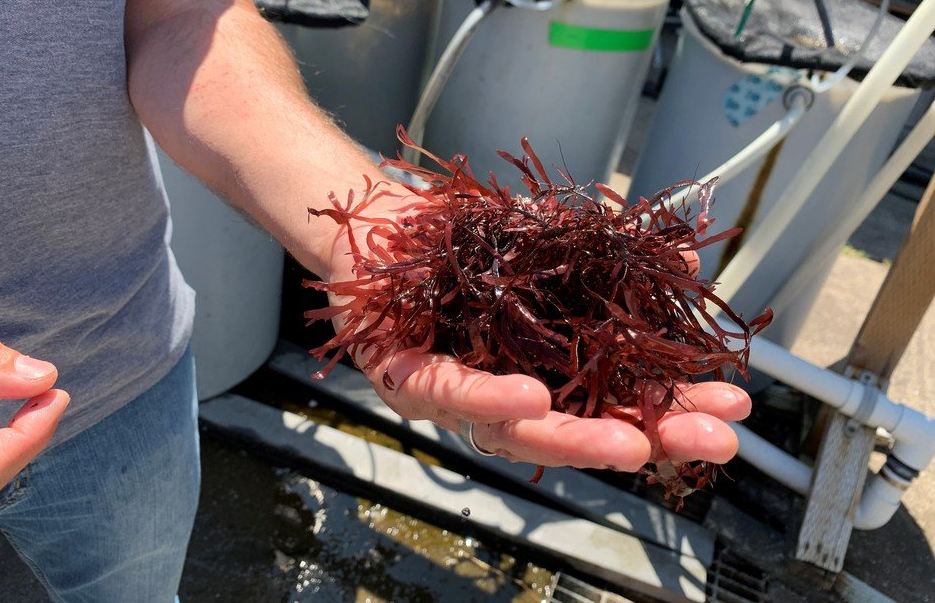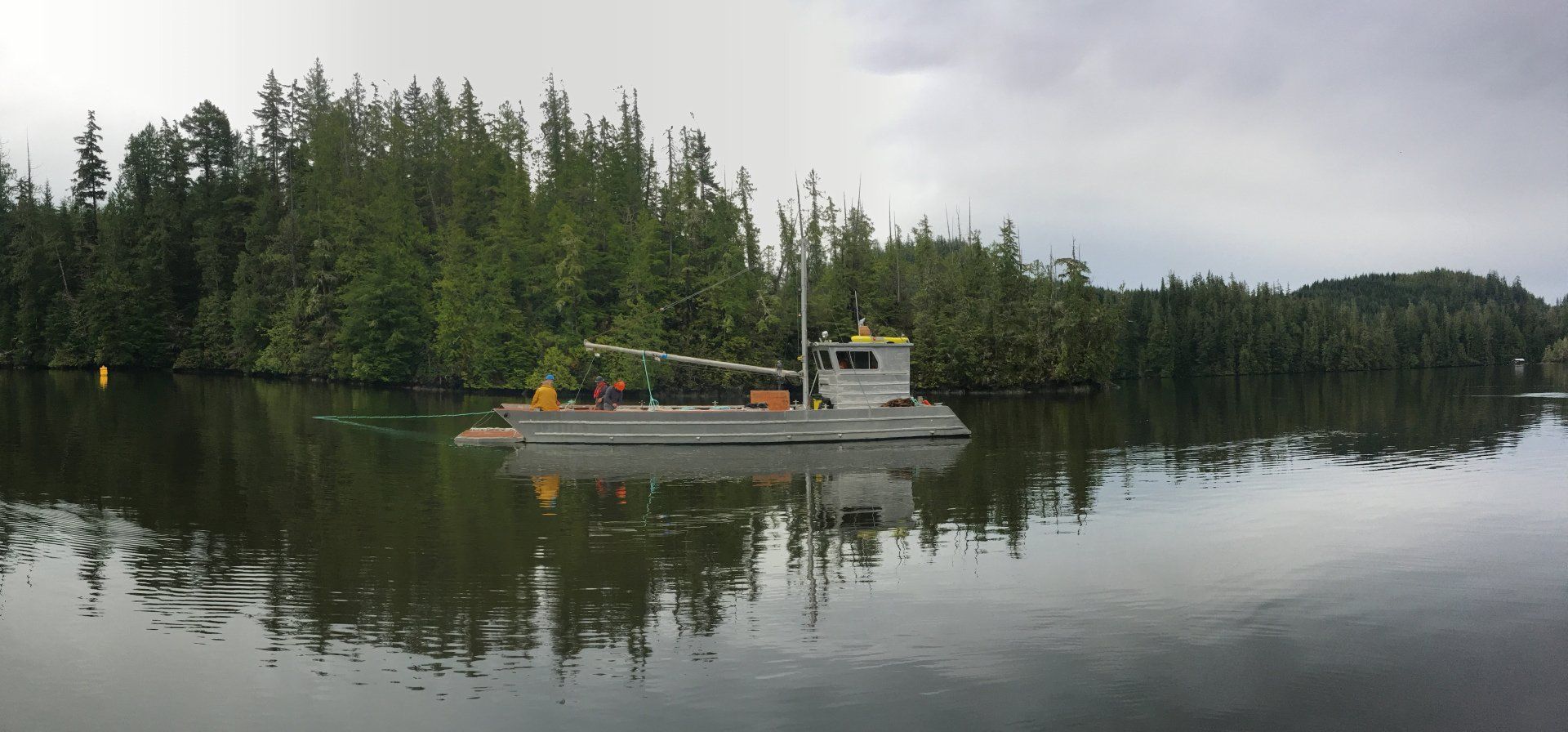Resources
for the Seaweed Sector
Frankie the Dinosaur has a message for Humanity
Would you like to share this video on your social platform? It's easy, just click the platform link below!
#DontChoseExtinction #TogetherForOurPLanet #COP26
Governments Step Up Action on Agriculture
and Food Security at COP27
The world’s agriculture sector is increasingly vulnerable to climate change. The evidence on the impacts of climate change on food security is growing worldwide and more prominently in developing countries: rising temperatures, heat waves, droughts and floods, changes in rainfall patterns and extreme events affect agriculture more than any other sector.
Seaweed aquaculture – panacea or hype?
Barely a day goes by without one media outlet or another waxing lyrical over the numerous benefits of seaweeds, and how they are going to save the planet. Some of it may be hype, but there is also much to be said for this sector, which is newly emerging in the Western world.
According to Thierry Chopin, Professor of marine biology at the University of New Brunswick, and a global expert on seaweed cultivation and integrated multi-trophic aquaculture (IMTA), seaweeds account for 51.3 percent of global mariculture production, but 99.5 percent of seaweed farming is concentrated in just nine east and southeast Asian countries.
FAO figures put the 2020 farm-gate value of world seaweed aquaculture production at USD 14.7 billion, but Chopin believes that “estimating the true value of seaweed markets is difficult, as seaweed applications are numerous, and some lucrative emerging markets are presently in full expansion while others need to be further developed.”
‘Sea forest’ would be better name than seaweed, says UN food adviser
Seaweed could help feed the world and reduce the impact of the climate emergency, a UN adviser on food has suggested.
Speaking at the Hay festival in Wales, Vincent Doumeizel suggested that the term “sea forest”, which is how seaweed is referred to in Norway, would be more appropriate, “because we would understand that we need to protect and preserve them as we do with all the land forests”.
All of the approximately 12,000 known varieties of seaweed are edible, says Doumeizel, whose book The Seaweed Revolution is currently out in French. If we used all of these varieties of seaweed more effectively, Doumeizel believes, we could “feed the entire world” sustainably, while “repairing the climate”, “mitigating biodiversity loss” and “alleviating poverty”.
B.C. kelp is in hot water, but science may help save our underwater rainforests
Kelp populations in the sound’s inlets and fiords off the West Coast of Vancouver Island vanished at 40 per cent of the sites analyzed due to the abnormally warm waters, a study led by Starko examining historical data from the Bamfield Marine Sciences Centre showed.
Kelp forests, which stretch across more than a third of the world’s coastlines and thrive in cooler water, are one of the marine habitats most threatened by global warming, Starko said.
“Kelp forests are really among the most productive and abundant ecosystems that we have in coastal British Columbia,” he said. “So understanding how and where these ecosystems are vulnerable to warming and to heat waves can help us better predict future changes and also improve our ability to conserve and restore these habitats.”
Estimating productions costs
for large-scale seaweed farms
Global seaweed production reached 32.4 million dry tonnes in 2018 (FAO). Much of this seaweed is harvested for human consumption; and almost all of it is farmed.
"Engaging on Canada’s Blue Economy Strategy -
What we heard"
Canada’s blue economy is complex. It takes place in, on and around a dynamic natural environment that supports an abundance of life, including the lives of Canadians as a source of food and a regulator of carbon and climate. The blue economy also occurs in a business environment with competing interests, evolving market access requirements, new and emerging technologies, and differing regulations. At the same time, it involves various levels of government and falls within the parameters of international agreements.
The following cross-cutting issues of our blue economy were identified in the engagement paper:
- natural environment
- science and data
- innovation
- business environment
- financing
- market access
- regulatory environment
Food and Agriculture Organization of the United Nations: The State of World Fisheries and Aquaculture 2020
The world’s appetite for fish and fish products shows no sign of slowing. This report demonstrates the significant and growing role of fisheries and aquaculture in providing food, nutrition and employment.
The fisheries and aquaculture sector significantly expanded in the past decades and total production, trade and consumption reached an all-time record in 2018.
Decolonizing ‘Regenerative’ Agriculture to Build a Just Food System
“Regenerative” grazing has been co-opted, often by agribusiness, as a key part of climate solutions. But larger holistic connections between farming and community — like those in agroecology and Indigenous models — are left out of the conversation, along with the importance of food sovereignty and culture.
We know that industrial agriculture in high-income countries is driving the climate emergency and extinction crisis and suppressing traditional foodways. But the people whose cultures traditionally provided food in agroecological ways that were climate-smart, wildlife-friendly, biodiverse, and supportive of equity and justice aren't typically given a seat at the table in agricultural policy solutions..
Sea-farmed supercrop:
How seaweed could transform the way we live
From high-protein food to plastics and fuel, Swedish scientists are attempting to tap the marine plant’s huge potential.
“We need a model where we’re actually doing serious scale aquaculture, whatever that looks like. This cannot be a boutique industry to high-end restaurants.”
If the goals of climate and social impact are to be realized, the industry has to go “beyond the froth and the excitement,” says Bren Smith, the former fisherman and long time ocean farmer who, with a Cornell law degree, has advanced interest in aquaculture from the helm of GreenWave, a nonprofit that trains and supports sea farmers.
Seaweed farming could boom but permitting remains difficult.
Much of the West Coast, the state needs a regulatory overhaul if it wants to take advantage of emerging ocean aquaculture.
On a gray February afternoon, Joth Davis motors his skiff along the northern edge of Washington's Hood Canal, a glacier-carved fjord in Puget Sound. A grid of black buoys marks the boundary of his 5-acre saltwater farm, where a crop of sugar kelp is growing quickly beneath the surface and containers of oysters bob atop the waves.
Residual water from the food industry gives seaweed cultivation a boost.
Can macroalgae, such as sea lettuce, become a competitive source of protein in the foods of the future the way soybeans are today? Seaweed naturally has a lower protein content than soybeans, but with fertilizer that difference decreases.
A scientific article from researchers at the University of Gothenburg and Chalmers University of Technology shows that process water from food production can serve as an excellent fertilizer in seaweed cultivation. The seaweed grew more than 60 per cent faster, and the protein content quadrupled with the addition of process water.
"The protein content of soybeans is about 40 per cent. By using process water, we have increased the protein content in the seaweed to more than 30 per cent," says Kristoffer Stedt, a doctoral student at the Department of Marine Sciences at the University of Gothenburg..
Why methane from cattle warms the climate differently than CO2 from fossil fuels
An unusual snack for cows, a powerful fix for climate
One of the most powerful weapons in the fight against climate change is washing up on shorelines around the world, unnoticed by most beachgoers.
It’s seaweed. Specifically, Asparagopsis taxiformis and Asparagopsis armata — two species of a crimson submarine grass that drifts on waves and tides all around the world’s oceans.
Feeding cows a small amount of seaweed can have a big impact on the planet
Farmers and researchers have found that feeding cows a small amount of seaweed can decrease production of methane, a type of greenhouse gas.
Beef a bigger challenge than oil and gas when it comes to tackling methane emissions
As Canada doubles down on efforts to reduce harmful methane emissions, experts say one of the trickiest hurdles standing in the way is the burping cow.
Can seaweed help solve Ireland’s livestock methane problem? - In Pictures
$10M announced to support
algae-feed research for US Dairy
"As the Earth warms and its population grows, pressure is mounting to optimize our food production and decrease its impact on the planet. Milk production in the United States has quadrupled in the past century, and the demand for dairy continues to grow globally. These new funds will support research into algae-based feed supplements that aim to balance quality milk production with environmental, economic, and social sustainability.
Recent research has shown that certain algae-based feed additives reduce cows’ methane-emitting burps, and can be produced with a lower carbon footprint than land crops. They also allow for increased potential to recycle and recapture nutrients in the feed production process. Further studies show that microscopic algae can offer similar benefits, and could provide a scalable solution for farms of all sizes.
To turn these scientific findings into an economic opportunity, a team of economists and other social scientists will look at how to integrate the product into the supply chain, make it profitable for each stakeholder, and foster its adoption through community outreach and decision-making tools."
https://www.penbaypilot.com/article/10m-announced-support-algae-feed-research-us-dairy/152685
SEAWEED AS A NATURE-BASED CLIMATE SOLUTION
UN Global Compact, Ocean Stewardship Coalition
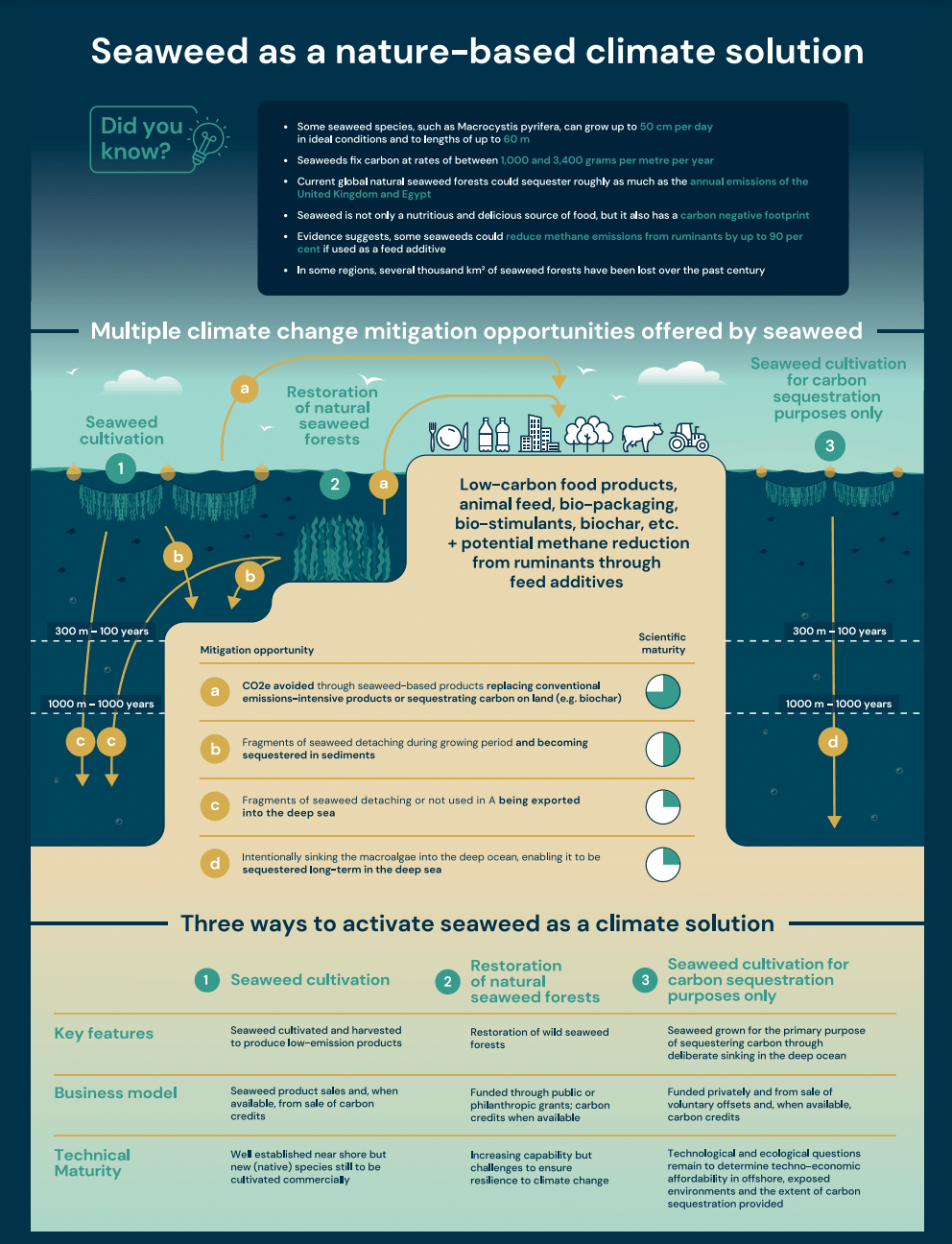
"We are on the cusp of a seaweed revolution that is scaling up production and ushering in new innovations to support the transition to a more sustainable future. Seaweeds can be used to support food security all over the world. They can be used as food, animal feed or plant biostimulant. They can add solutions for biodegradable plastics to eradicate plastic pollution and represent vast potential for innovation in medicine. The growing seaweed industry can also create cascading societal benefits through distributed and inclusive value chains that provide decent jobs within coastal communities."
https://www.unglobalcompact.org/library/5974
SEAWEED MANIFESTO
Lloyds Register Foundation
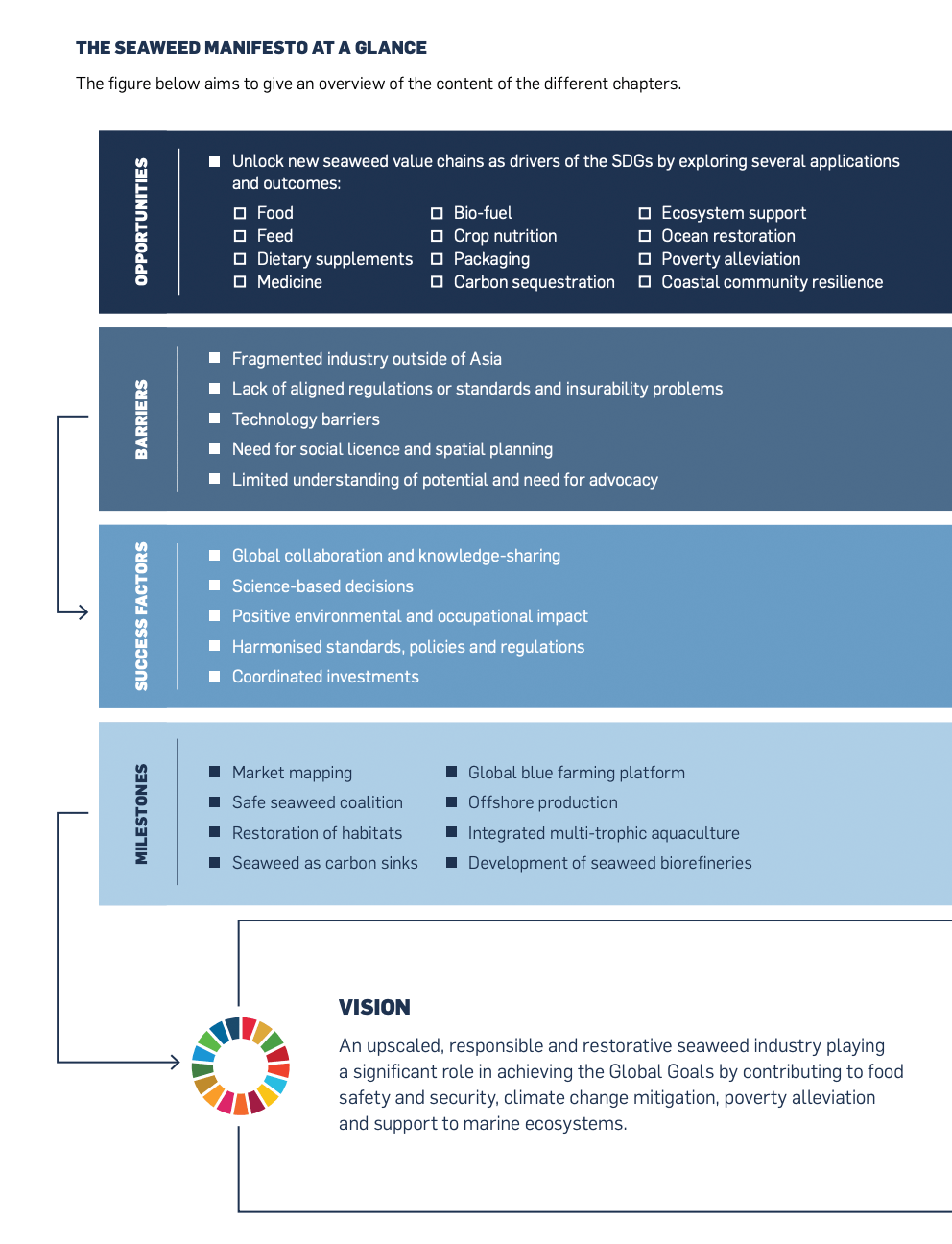
"Seaweed has the potential to address some of the world’s most pressing challenges. Our vision is an upscaled, responsible and restorative seaweed industry, playing a globally significant role in food security, climate change mitigation, and support to the marine ecosystem, as well as contributing to job-creation and economic growth. The vision goes beyond being sustainable. The aim is to restore abundance to the ocean while solving some of the world’s biggest societal challenges. About 50 per cent of the photosynthesis on Earth occurs in seaweeds and microscopic algae floating in the oceans contributing to the uptake of carbon dioxide and the release of oxygen. The seaweeds provide shelter for marine life and are an important part of the food chain."
https://www.unglobalcompact.org/library/5743
Alaska Seaweed Market Assessment
Prepared for the Alaska Fisheries Development Foundation
by the MCKINLEY RESEARCH GROUP
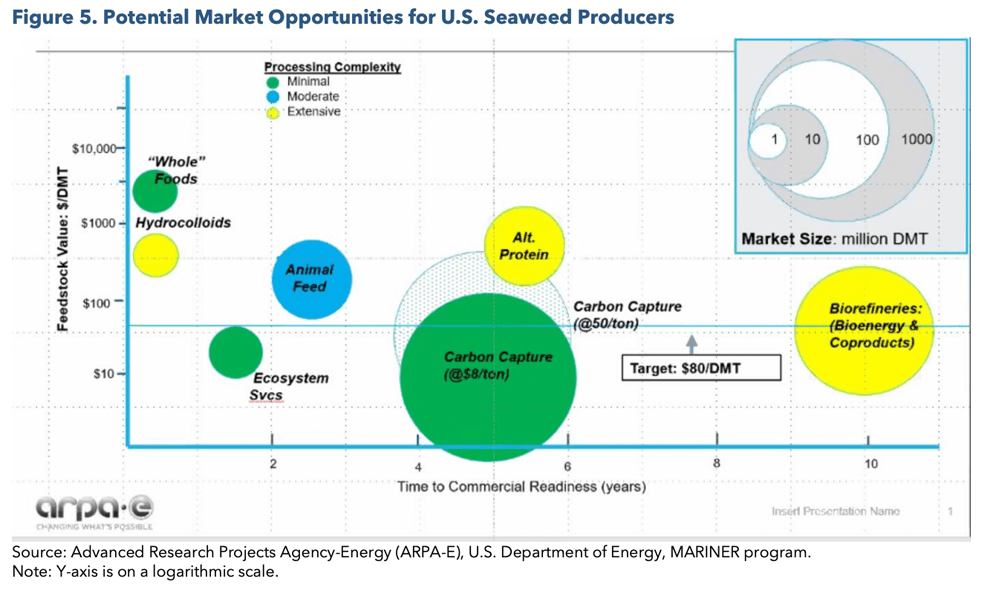
"In their fifth year of commercial activity, Alaska's seaweed farmers are seeing exponential year-over-year production growth. The first generation of farmers have transitioned from prototype facilities to working farms with steadily increasing footprints. Permit applications have increased every year since commercial seaweed farming began in 2017, though most of this second wave of seaweed farmers have yet to produce kelp for sale. Seaweed permit applications in the 2021 application period were down, likely attributable to the COVID-19 pandemic. Alaska's commercial seaweed crop is used almost entirely for consumer food products, much of it sold through natural foods channels and retail segments. These food markets garner a premium for Alaska’s highquality seaweed and are among the only markets able to support Alaska’s current high production cost structure."
https://phyconomy.net/wp-content/uploads/2021/09/Alaska-Seaweed-Market-Assessment-2021-08-FINAL.pdf
Final Report to Governor Dunleavy
Produced by the Alaska Mariculture Task Force
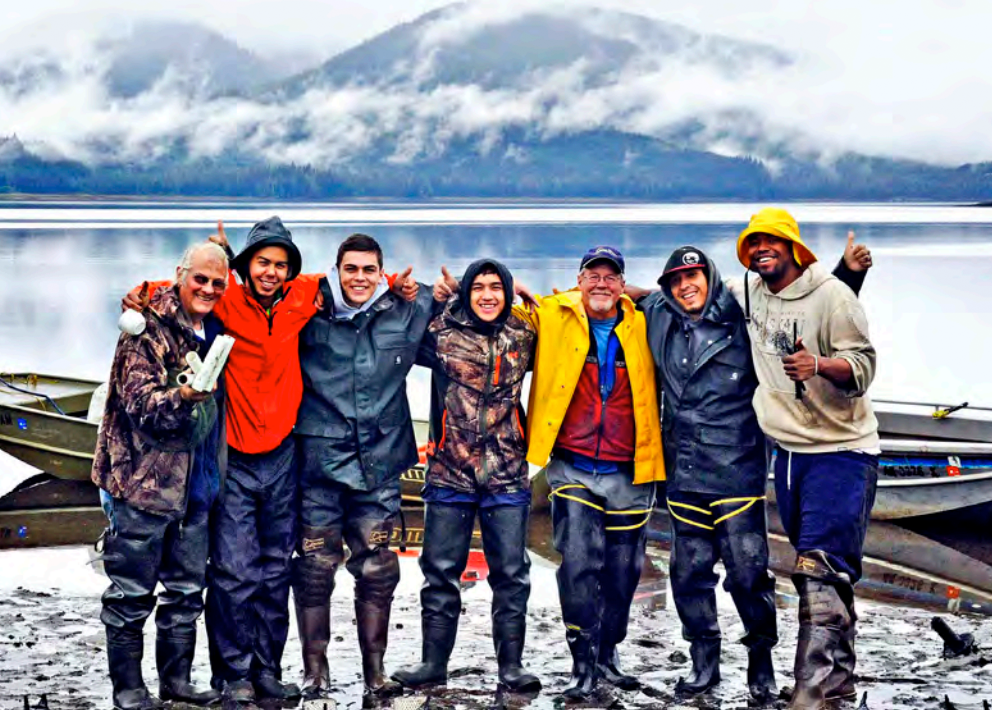
"Alaska has all the qualities of an environment suited for mariculture development: clean and abundant waters, a reputation for sustainably managed resources, the skills and abilities of coastal Alaskans who work on the water, the cultural knowledge of Alaska Natives, and an existing seafood industry and infrastructure. The state has research and development capacity at the University of Alaska, State, Federal and industry level, as well as the Alaska Seafood brand established by the Alaska Seafood Marketing Institute that effectively reaches consumers all over the nation and the world. The regulatory process and agencies are accessible, and the Legislature has passed and continues to consider essential laws to help develop mariculture."
https://www.afdf.org/wp-content/uploads/Mariculture-Task-Force-Report-to-Gov-Final-compressed.pdf
Hidden Champion of the Ocean
Seaweed for Europe
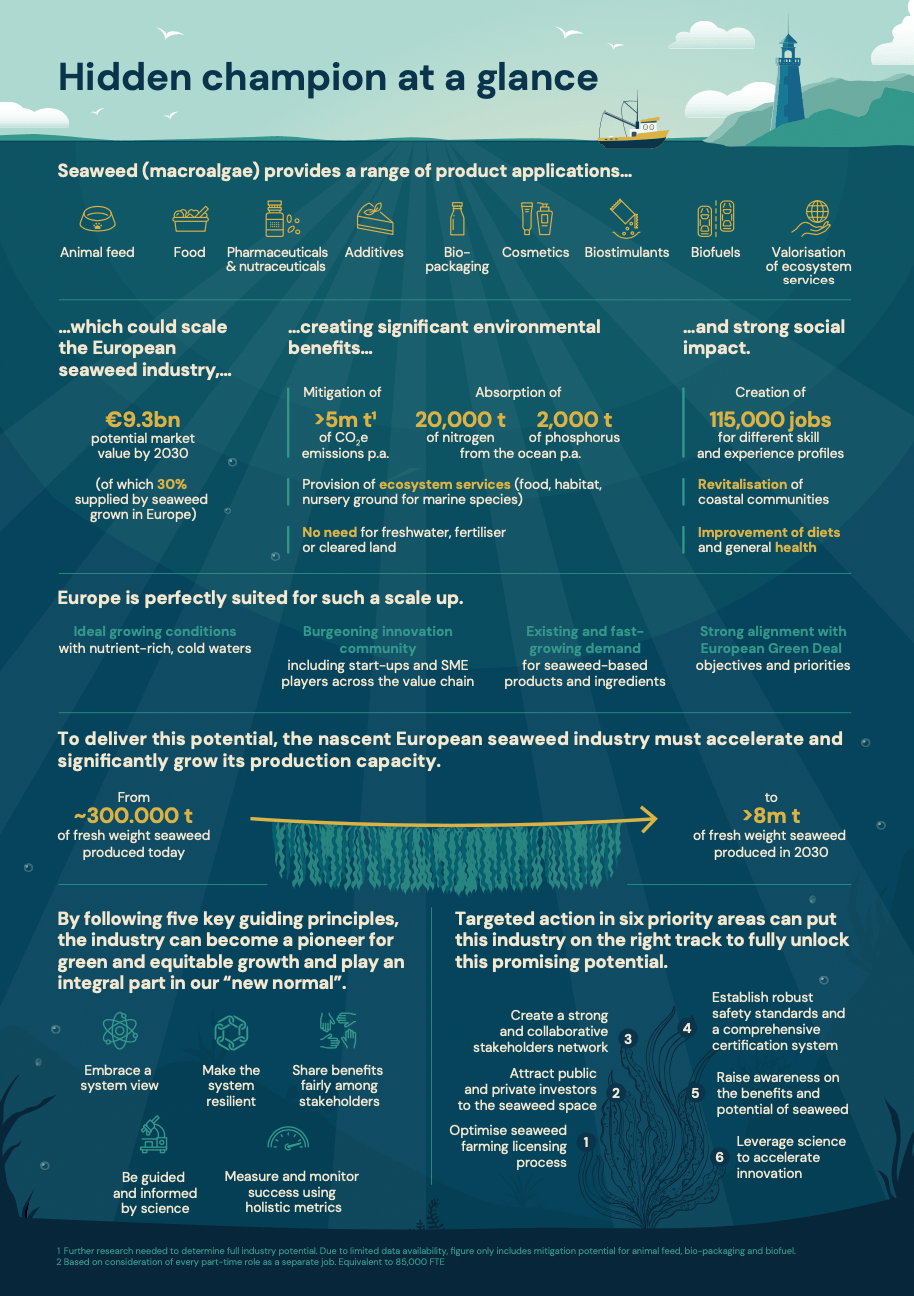
“The ocean holds tremendous opportunities for boosting jobs and the economy while at the same time helping and healing the planet. This report highlights the new, sustainable business opportunities that seaweed can represent, and I welcome this contribution to increasing our awareness of ocean health and wealth.”
Erna Solberg, Prime Minister of Norway and Co-Chair of the High Level Panel for a Sustainable Ocean Economy
Seaweed: An Agent of Change within the Blue Economy
Seaweed for Europe

"The recent global pandemic has only exacerbated the human impact of these phenomena and further revealed the fragile ties between our economy and environment. Concentrations of CO2 increase in the oceans just as they do on land, but the oceans suffer more than double the damage as they already act as a global cooling system, storing 90% of the Earth’s heat. Now more than ever, the world must invest in greener technologies and behaviours to maintain global temperatures within 1.5 °C above pre-industrial levels and protect ecosystem services. As of 2020, mean temperatures approach this threshold, hovering at 1.2 °C ± 0.1 °C [1]. With the longest coastline in the world and a rich marine biodiversity, Canada has the opportunity to cultivate a green resource with the potential to curb climate change, address food insecurities, and secure the sustainability of the blue economy: seaweed."
Disrupting tropical seaweed farming with offshore submersible cages
"Former CEO of Catalina Sea Ranch Phil Cruver is developing a submersible cage system to take tropical seaweed farming offshore and into a new era. In addition to providing higher yields, the cages should also protect from predators, storms and ice-ice disease."
https://phyconomy.net/articles/disrupting-tropical-seaweed-farming-with-offshore-submersible-cages/
The Environmental Risks Associated With the Development of Seaweed Farming in Europe - Prioritizing Key Knowledge Gaps
"Cultivation of kelp has been well established throughout Asia, and there is now growing interest in the cultivation of macroalgae in Europe to meet future resource needs. If this industry is to become established throughout Europe, then balancing the associated environmental risks with potential benefits will be necessary to ensure the carrying capacity of the receiving environments are not exceeded and conservation objects are not undermined. This is a systematic review of the ecosystem changes likely to be associated with a developing seaweed aquaculture industry."
https://www.frontiersin.org/articles/10.3389/fmars.2019.00107/full
$59m grant to help scientists unlock the power of seaweed and other marine molecules.
"If Australia takes its biotechnology expertise and applies it to opportunities from the ocean, we can unlock such big future growth in sustainable high-tech industries."
Algae is a powerhouse for the climate, sending carbon to the seafloor and deacidifying oceans. In Australia, scientists are just beginning to tap its potential.
"The Aboriginal peoples of Australia were some of the first seaweed innovators in the world. And 45,000 years later on mainland Australia, people are again turning to algae to solve pressing problems. Today, it is not how to get water from A to B, but how to address the world's climate crisis. And in several large open-air bubbling green vats at an industrial complex in Nowra, New South Wales, Pia Winberg is exploring exactly how."
Read the full article from BBC here.
SEaweed: Sustainable crop of the future?
Could Seaweed Help Save the Planet?
INDIE ALASKA
Cultivated seaweed can soak up excess nutrients plaguing human health and marine life
""Cultivating seaweed in less than 1% of the U.S. Gulf of Mexico could potentially reach the country's pollution reduction goals that, for decades, have been difficult to achieve," said lead author Phoebe Racine, a Ph.D. candidate at UCSB's Bren School of Environmental Science & Management. Dealing with nutrient pollution is difficult and expensive," Bradley added. The U.S. alone spends more than $27 billion every year on wastewater treatment."
Read the full press release from Science Daily
here.
Seaweed farms provide refugia from ocean acidification
Custodians of the globe's blue carbon assets
‘GREEN GRAVEL’ INITIATIVE HOPES TO SEED NEW KELP FORESTS ON CANADA’S WEST COAST
Conserving the largest ecosystem on Earth
The World of Tomorrow Might Be Powered by Seaweed
Five Reasons Why Sea Vegetables Could Be The Future Of Produce
Minister Jordan launches engagement on Canada’s new Blue Economy Strategy
Seagrasses and mangroves can suck carbon from the air
Forget planting trees: This company is making carbon offsets by putting seaweed on the ocean floor.
"The National Institute of Ocean Technology (NIOT) has developed a bio-plastic film using marine seaweed and PEG-3000 which could have a huge impact on limiting the usage of non-biodegradable plastics and a game-changer in the plastic industry. Bio-plastic films safely breakdown in the environment without leaving any toxicity."
Read the article here.
And watch for an announcement coming soon from Cascadia Seaweed in relation to bio-packaging.
11 innovations protecting life below water – and above it
"The ocean is our lifeline - its health is essential to our health. Securing the ocean’s well-being will have positive impacts across many global challenges we face today such as poverty, hunger, human health, unemployment, inequality and more. Finding and elevating promising ocean innovations wherever they may be, connecting them and helping them scale is crucial to ensure we protect one of our planet’s most valuable assets."
Find out more about the second cohort of ocean innovators recognized by UpLink and the World Economic Forum
here.
Forget planting trees: This company is making carbon offsets by putting seaweed on the ocean floor.
"Off the coast of Portland, Maine, an aquaculture startup that raises shellfish is also working on a more radical project: raising kelp in the open ocean, then sinking it to the seafloor to sequester the carbon inside.
The company, called Running Tide, argues that the approach could be essentially a permanent way to deal with the excess carbon in the atmosphere. Like trees, seaweed forests suck in carbon from the air as they grow. But while carbon in forests on land can sometimes be lost—as in California, where more than 2 million acres of trees have burned so far this year—kelp that sinks to the bottom of the ocean can stay there for centuries."
Fast Company article available here.
Cascadia Seaweed is working with the Oceans 2050 Seaweed Project, a global consortium interested in quantifying how much carbon is actually sequestered during the kelp growth cycle. Watch our news page for that story.
The High Level Panel for a Sustainable Ocean Economy
"Our well-being depends on a healthy ocean. It always has. It always will.
The pressures on the ocean are intense and growing – but we know recovery is possible. Crucially, a healthy ocean holds the solutions to many of the world’s challenges.
Putting sustainability at the heart of ocean management is essential for protection, production and prosperity that benefits people, nature and the economy.
The leaders of 14 countries have put forward a new ocean action agenda underpinned by sustainably managing 100% of national waters."
Scaling up the environmentally responsible commercial farming of seaweed and algae is identified as a priority action under the transformation of ocean wealth.
Let’s Feed Seaweed To Cows & Reduce Their Methane Burping.
"How can the agriculture industry reduce the amount of methane released when cows burp? It’s been a struggle for scientists and policymakers. A new method in which farmers feed seaweed to cows — needing to incorporate only about 0.2% of the total feed intake — indicates that methane levels can be reduced by 98%. It’s a real breakthrough, as most existing solutions cut methane only by about 20% to 30%."
Learn more in the
article from CleanTechnica here.
New Ocean Action Agenda Echoes Canadian Fish and Seafood Industry’s Vision for Sustainable, Ocean-Led Economy.
"The Fisheries Council of Canada (FCC) and the Canadian Aquaculture Industry Alliance (CAIA) are pleased to support the new Ocean Action Agenda released by the High Level Panel for a Sustainable Ocean Economy (Ocean Panel). Their mission of building a sustainable ocean economy balancing effective protection, sustainable production and equitable prosperity is in alignment with the goals of the Canadian fish and seafood industry and our own
Blue Economy Strategy 2040.
The Ocean Panel, composed of 14 serving world leaders, including Prime Minister Justin Trudeau, has put forward a new ocean action agenda..."
Read the
full press release from CAIA here.
Hidden champion of the ocean: Seaweed as a growth engine for a sustainable European future.
"Europe is at crossroads. The health of our ocean is at peril, climate change consequences are increasingly manifesting, inequalities are on the rise, the economic future is uncertain. At the same time, the European Green Deal constitutes the most ambitious political package to build a greener, more resilient, and fair Europe.
Achieving this ambition will require the development of new and regenerative industries. Seaweed is a promising ocean material which could support this agenda."
The comprehensive, 60 page document is available online here.
Plans to invest $60 million to create the world’s largest kelp farm 3-10 kilometres off the coast of Namibia have been announced today.
"Kelp is a fast-growing seaweed and has the ability to sequester more CO2 than terrestrial forests, while boosting marine biodiversity and improving fish stocks and generating additional ecological benefits, including counteracting ocean acidification and de-oxygenation. The farmed seaweed will be harvested to produce alternative agri-food, bio-stimulant and textile products."
For seaweed farmers in Zanzibar, a chance for real growth.
"The women wade out at sunrise. Waist-deep in their khangas or traditional buibui covering cloths, they tend to their farms. Combing through tangled nests of seaweed, they inspect their crops, tie new seed and collect their harvests. Most of the women cannot swim. Some plots lie at long distances from the shoreline, and the famers must trek through the shallows to reach them when the tide recedes."
Read the entire article by Marie-Louise Antoni on the Global Aquaculture Alliance website.
Seaweed: The food and fuel of the future?
"Seaweeds are fast-growing algae. They utilise energy from sunlight, and take up nutrients and carbon dioxide from the seawater. Scientists suggest seaweed could help fight climate change and offset carbon emissions."
The Benefits of Kelp Will Convince You to Start Snacking On This Sea Veggie.
"If you're wondering how to eat kelp, you're in luck: It's a surprisingly versatile food. You can buy the sea veggie dried or fresh; dried kelp needs to be rehydrated by soaking in water, while fresh kelp needs to be rinsed with water to remove excess salt, then drained. From there, here's how you can add it to your weekly rotation."
Recipes,
health benefits, nutrition facts and more from the article in Shape Magazine.
COVID-19 and the demand for food.
"Net-producer nations like Canada are at a clear advantage. Securing domestic supplies has increased the incentive to produce and process more food at source. Investing in more local food processing just got a lot more attractive. At the same time, the need of foreign customers to secure international supply chains has upped the ante on Canada’s distribution system: ensuring competitive and reliable food trade infrastructure, important before the crisis, is now much more so."
From Vice-President and Chief Economist at Export Development Canada, Peter Hall, the story and interview is available here.
An Ocean Of Culinary Possibilities Using Fresh Seaweed.
Read the entire article and get your very own recipe for seaweed butter here.
In cell studies, seaweed extract outperforms remdesivir in blocking COVID-19 virus.
Dordick added that compounds from seaweed "could serve as a basis for an oral delivery approach to address potential gastrointestinal infection."
Read more from Science Daily here.
NIC researching benefits of seaweed in cattle diet.
World first: seaweed cultivation within a wind park at sea in the Belgian wind park Norther.
The current challenges of sustainable food production and climate change call for an innovative aquaculture sector in Europe. Seaweed is an indispensable part of this: it is full of proteins, minerals and vitamins, and growing this nutritious, sustainable food source does not require soil, fresh water or fertilizers."
Read more here.
Algae Is the New Popcorn. And Pasta. And Bacon.
Seaweed Revolution: A manifesto for a sustainable future.
Access the report from the UN Global Compact here.
Regenerative ocean farming' could be coming soon to a coast near you
Read more about Bren Smith, the Newfoundland-born owner of Thimble Island Ocean Farm, here.
Kelp forests have grown twenty-fold, providing new habitat for range of fish, researchers say
Read about both perspectives here.
NIC and Kwiakah First Nation Partner for Kelp Research
Read the article from the Campbell River Mirror here.
Will seaweed save the world?
Seafood - including algae - will be increasingly important for global food security, according to the European Union and the UN Food and Agriculture Organization. With sustainable farming methods, we can increase our production of seaweed without harming the marine environment. As a source of vitamins, minerals, antioxidants and proteins, algae also ticks the boxes when it comes to building sustainable food system’s in Europe."
Learn how seaweed will save the world here.
How Kelp Naturally Combats Global Climate Change
Read the entire article by Sylvia Hurlimann here.
5 Reasons to Protect Kelp, the West Coast's Powerhouse Marine Algae
Learn more about the 5 reasons here.
Evaluating brown seaweed supplementation in feed for Atlantic salmon smolts
Read the complete story here.
The Algae Technology Educational Consortium
A partnership between academic institutions, national research laboratories, and industry leaders, the consortium’s goal is to develop novel educational programs to strengthen industry workforce capabilities, by focusing on the skills needed to support the commercialization of algal products. Through algal education, students learn practical applications of farming and biotechnology developing the skills for the next generation of algal-based jobs."
Learn more about the ATEC here.
New reports show alternative proteins are poised to flourish post Covid-19
Read the summary from the Good Food Institute here.
Farmers Feeding Seaweed To Cows In Effort To Reduce Greenhouse Gas
The Ocean Finance Handbook
Increasing finance for a healthy ocean
Increasing finance for a healthy ocean
- Friends of Ocean Action
Seaweed may become a profitable piece in the green transition jigsaw
Read the entire article here.
Edible Seaweeds: Kelp is the new Kale
- Jane Mundy
Read the complete article and discover a seaweed salad recipe here.
Ocean Wise Executive Chef Ned Bell bakes brownies with a kelp twist.
Watch the complete video of Executive Chef Ned Bell from Ocean Wise baking brownies with a kelp twist here.
Norway: A future seaweed powerhouse?
Read the complete article from Food Navigator here.
Environmental heterogeneity mediates declines in kelp diversity on intertidal rocky shores.
- Samuel Starko, Chris Neufeld et al
Read the research article, published in March of 2019, here.
Move over, Kale: Dulse is the Superfood of the future.
B.C. kelp farming is untapped resource
Read the complete article in BC Business here.
The Quest For Sustainable Seaweed
Read the complete article from AgFunderNews here.
Nursery Phase: The Journey of Kelp from Spore to String to Sea
Read the complete article by Lindsay Green-Gavrielidis here.
Contact Us
Please use the contact form below to share it with us!
Thank you for contacting Cascadia Seaweed. We are a growing company with many lines in the water, but we'll get back to you soon.
Oops, there was an error sending your message.
Please try again later or send an email to info@cascadiaseaweed.com.
C - 9774 Third Street Sidney British Columbia V8L 3A4
Email: info@cascadiaseaweed.com
Phone: 1-778-351-4484

9774 - C Third Street Sidney British Columbia V8L 3A4
Email: info@cascadiaseaweed.com
Phone: 1-778-351-4484

